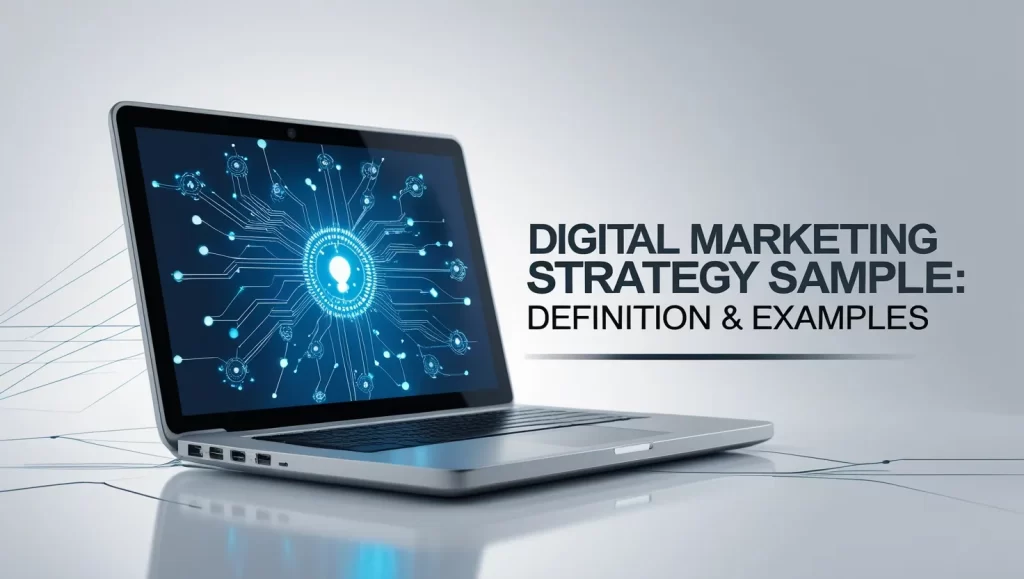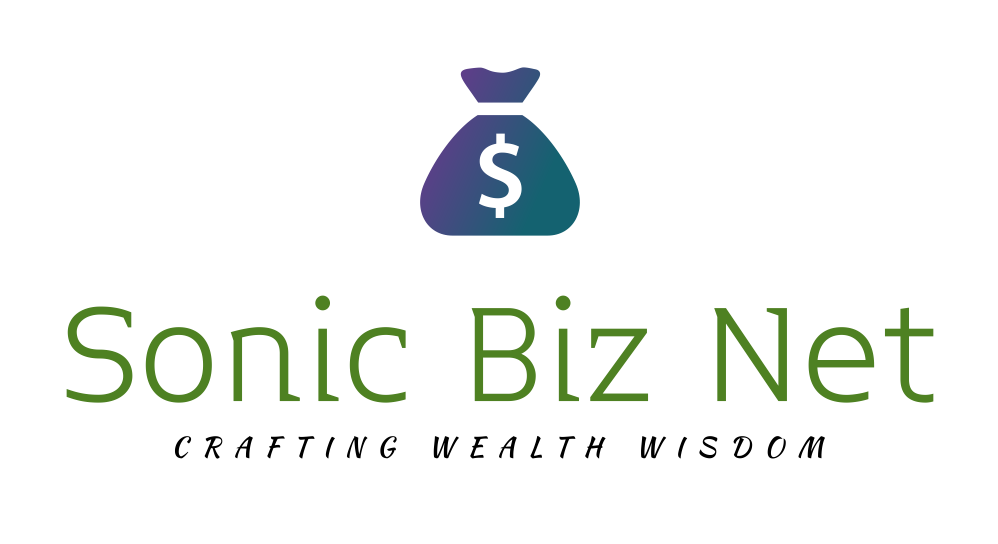Digital Marketing Strategy Sample: Definition & Examples

Digital Marketing Strategy Sample: Definition & Examples-In today’s fast-paced digital world, a well-crafted digital marketing strategy is essential for any business looking to thrive online. Whether you’re a startup or an established enterprise, an effective digital marketing strategy can help you connect with your audience, drive traffic, and boost conversions. But what exactly is a digital marketing strategy, and how can you develop one? In this article, we’ll explore the definition of a digital marketing strategy and provide some sample examples to inspire your next campaign.
What is a Digital Marketing Strategy?
A digital marketing strategy is a comprehensive plan that businesses use to promote their products or services through digital channels. It involves the use of various online platforms and technologies to reach a specific target audience and achieve business objectives such as increasing sales, improving brand visibility, and growing customer engagement.
Digital marketing strategies often include elements like social media marketing, email campaigns, SEO, content marketing, paid ads, and influencer partnerships. These strategies are data-driven and tailored to the needs of the business, helping brands optimize their marketing efforts for the digital world.
The purpose of a digital marketing strategy is not just to increase online presence but also to create meaningful interactions with customers, driving growth and creating lasting relationships. A well-defined strategy allows businesses to allocate resources efficiently, track progress, and adjust tactics as needed.
Key Components of a Digital Marketing Strategy

Before we dive into specific examples, let’s take a look at the key components of a digital marketing strategy. Each of these elements plays a vital role in shaping the overall plan:
1. Target Audience
Understanding who your audience is and what they need is crucial to crafting an effective digital marketing strategy. Defining your ideal customer will help you determine which channels to use, the type of content to create, and how to communicate your message.
2. Objectives and Goals
A digital marketing strategy must have clear objectives. These could include increasing website traffic, improving conversion rates, generating leads, or boosting brand awareness. Your goals should be measurable, specific, and aligned with your overall business objectives.
3. Digital Channels
There are many digital channels you can use to promote your business. Some of the most common include:
- Social Media Marketing: Platforms like Facebook, Instagram, and Twitter help brands engage with customers.
- Search Engine Optimization (SEO): Optimizing your website to rank higher on search engines like Google.
- Content Marketing: Creating valuable content to attract and retain customers.
- Email Marketing: Sending targeted emails to nurture customer relationships and promote offers.
- Paid Advertising: Running ads through Google Ads, Facebook Ads, or other platforms to drive traffic.
4. Content Strategy
Content is at the heart of digital marketing. Whether it’s blog posts, videos, social media updates, or email newsletters, a content strategy helps you determine what kind of content to create, how often to publish, and on which platforms.
5. Measurement and Analytics
A digital marketing strategy is not complete without the ability to track performance. Using tools like Google Analytics, you can monitor key metrics such as website traffic, conversion rates, bounce rates, and ROI. This data allows you to refine your strategy and make data-driven decisions.
Digital Marketing Strategy Sample #1: Social Media Campaign for Brand Awareness
One popular example of a digital marketing strategy is a social media campaign aimed at increasing brand awareness. Social media platforms like Facebook, Instagram, and TikTok provide businesses with an incredible opportunity to connect with their target audience, tell their brand story, and engage with followers.
Steps:
- Set Clear Objectives: For example, increase followers by 20% in 6 months.
- Identify the Target Audience: Focus on age groups, interests, and behaviors that align with your brand.
- Choose Platforms: Select platforms where your audience is most active.
- Develop a Content Plan: Include a mix of promotional posts, behind-the-scenes content, and user-generated content.
- Track Metrics: Measure engagement, reach, and follower growth to evaluate the campaign’s success.
This kind of strategy uses eye-catching visuals and relatable content to capture attention and spread brand awareness organically. (Read More: Maximizing Your Reach: How Meta Business Suite is Revolutionizing Digital Marketing in 2024)
Digital Marketing Strategy Sample #2: SEO Strategy for Lead Generation

An SEO strategy focuses on improving your website’s ranking on search engine results pages (SERPs), which increases organic traffic. When your website ranks high on Google, potential customers can easily find your content and services.
Steps:
- Set SEO Goals: For example, increase organic traffic by 30% over the next 6 months.
- Conduct Keyword Research: Identify high-traffic keywords that match your business offering.
- Optimize On-Page Elements: Ensure your website’s title tags, meta descriptions, and headers are optimized for targeted keywords.
- Create High-Quality Content: Develop blog posts, articles, and landing pages focused on solving your target audience’s problems.
- Build Backlinks: Get authoritative sites to link to your content, which helps improve your domain authority.
An effective SEO strategy will help you attract leads who are actively searching for your products or services, increasing the likelihood of conversion.
Digital Marketing Strategy Sample #3: Email Marketing for Customer Retention
Email marketing is one of the most powerful tools for retaining customers and keeping them engaged with your brand. Through personalized email campaigns, you can nurture relationships, encourage repeat purchases, and drive brand loyalty.
Steps:
- Segment Your Audience: Divide your email list based on customer behavior, purchase history, or demographics.
- Create Engaging Content: Write personalized emails that provide value, such as product recommendations, exclusive offers, or helpful content.
- Use Automation Tools: Automate email sequences to engage customers at the right time, such as sending cart abandonment emails or post-purchase follow-ups.
- Measure Success: Track open rates, click-through rates, and conversion rates to gauge the effectiveness of your campaigns.
Email marketing works particularly well for businesses with established customer bases, as it allows you to maintain ongoing communication and strengthen customer loyalty. (Read More: 6 Digital Marketing Strategies for Business Networking Development)
Digital Marketing Strategy Sample #4: Paid Social Ads for Immediate Traffic
Paid advertising through social media platforms can be an excellent way to drive immediate traffic to your website. With targeted ads, you can reach people who have never heard of your brand and guide them directly to your site.
Steps:
- Choose the Right Platform: Select a platform like Facebook or Instagram based on your target audience.
- Set Your Budget: Determine how much you want to spend on each ad campaign.
- Create Compelling Ads: Use strong visuals, clear messaging, and a call-to-action to prompt users to click.
- Target the Right Audience: Use targeting options to reach your ideal customer based on factors like age, interests, and behavior.
- Optimize Campaigns: Monitor ad performance and adjust your strategy for maximum results.
Paid social ads can bring in quick traffic and increase conversions, especially if you’re running a time-sensitive promotion or launch. (Read More: How to Maximize Your Marketing Strategy with Meta Business Suite in 2024)
Digital Marketing Strategy Sample #5: Content Marketing for Thought Leadership

Content marketing focuses on creating valuable and relevant content that attracts, engages, and converts your target audience. A content marketing strategy can help you establish your brand as an authority in your industry and foster trust with your audience.
Steps:
- Set Goals: Aim to increase website traffic and engagement by providing high-quality, informative content.
- Develop a Content Calendar: Plan regular blog posts, videos, and other content types that resonate with your audience’s pain points.
- Promote Content Across Channels: Share your content on social media, email newsletters, and other platforms to maximize reach.
- Measure Effectiveness: Track metrics like page views, shares, and time spent on page to determine the value of your content.
By consistently delivering high-quality content, you can build brand authority and attract customers who see you as a trusted source of information.
Final Thoughts on Crafting Your Digital Marketing Strategy
No two digital marketing strategies are exactly alike. Whether you focus on SEO, social media, email marketing, or paid ads, it’s important to tailor your strategy to your business objectives and target audience. By analyzing your goals, selecting the right channels, and creating compelling content, you’ll be well on your way to developing an effective digital marketing strategy that drives success.





